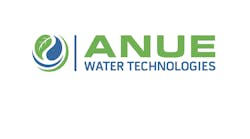By Patrick Crow, Washington Correspondent
The Environmental Working Group said hydraulic fracturing of natural gas wells is a major issue that must be faced by the Obama Administration. Seventeen environmental groups, led by the Environmental Integrity Project (EIP), have petitioned the EPA to require the oil and gas producers to report the chemicals they use in hydraulic fracturing to the federal Toxics Release Inventory (TRI).
"Until we have a framework in place to ensure that drilling happens responsibly, we need to stem the fracturing tide as it makes its way across America," the Environmental Working Group said.
EIP Director Eric Schaeffer said the TRI "makes it easier for communities to measure the environmental impact of local industries, motivates companies to reduce their emissions, and gives all of us insight into how well our environmental laws are working."
The group said that data on the oil and gas industry (including hydraulic fracturing) points to a large toxic footprint. EPA has estimated that the industry emits 127,000 tons of hazardous air pollutants every year, including benzene, xylenes, and hydrogen sulfide - more than any other TRI industry except electric utilities.
It said the industry regularly uses products containing at least 45 TRI-listed toxic chemicals, the most common of which are: methanol, 2-butoxyethanol, and ethylene glycol.
EIP said the electric utilities, coal mining, and metal mining sectors all have all reported to the TRI for nearly 15 years. It said oil and gas producers are also exempt from key provisions of other major environmental laws.
The TRI was enacted in 1986 as a response to the Bhopal disaster in India. It requires industrial facilities to report annually on releases of 650 toxic chemicals. The reports published in the Inventory are available to the public online.
Nutrient Monitoring
The Mississippi River/Gulf of Mexico Watershed Nutrient (Hypoxia) Task Force has launched two efforts to monitor reductions in nutrients (nitrogen and phosphorus) throughout the watershed.
The joint federal, state and tribal task force, chaired by EPA and the State of Iowa, has established the Mississippi River Monitoring Collaborative to evaluate progress toward reducing the amount of nutrients entering local waterways and ultimately to the Gulf of Mexico.
The U.S. Department of Agriculture (USDA), a member of the Task Force is also preparing to update its technical standard for water quality monitoring to better measure the amount of nutrients coming from farm fields.
Nutrient runoff from agricultural, urban and industrial sources has polluted waterways for decades and contributed to the hypoxic zone in the Gulf of Mexico -- an area of low oxygen that is largely uninhabitable by fish and other marine life. Federal, state and local agencies, together with private landowners and water users, have been working to reduce the amount of nutrients that reaches the Gulf.
The new Mississippi River Monitoring Collaborative, made up of federal and state agencies, is identifying streams with long-term nutrient monitoring and streamflow records. So far, the team has collected more than 670,000 nutrient data records from 12 states in the Mississippi River Basin, which it will use to evaluate where conservation practices and policies are working, and where new or enhanced nutrient reduction strategies need to be developed.
USDA's Natural Resources Conservation Service, with assistance from EPA, the U.S. Geological Survey and state partners, are working to improve monitoring through pilot programs of the Mississippi River Basin Healthy Watersheds Initiative. One of the primary goals of the MRBI is to improve water quality in small priority watersheds of the Mississippi River Basin.
In other Washington news:
-- EPA has drafted a plan to clean Dioxins and Polychlorinated Biphenyals (PCBs) from sediment, soil, surface water and groundwater at the Centredale Manor Restoration Project Superfund Site in North Providence, R.I. The plan would prevent additional pollution of the Woonasquatucket River.
-- EPA has drafted a plan to remove organic compounds from soil and ground water at the Diaz Chemical Corp. Superfund site at Holley, N.Y. It would use a technology to treat six areas of soil and ground water that continue to cause contamination of ground water in a broader area.
-- Alaska Gold Co. has paid a $177,500 penalty for alleged Clean Water Act violations at its Rock Creek mine near Nome, Alaska. EPA had alleged that the company violated permit requirements for controlling storm water pollution during construction activities.
-- GE Co. has agreed to take over the treatment systems on wells that supply drinking water to four properties within the Cayuga County Ground Water Contamination Superfund site. Volatile organic compounds had seeped into the ground water from a facility on Genessee Street in Auburn, N.Y., where GE and Powerex made semiconductors.
-- EPA said Strategic Materials of Houston, Texas, faces a potential $177,500 fine for allowing polluted stormwater from its glass recycling facility in Franklin, Mass., to flow into nearby waters, in violation of the Clean Water Act.
-- The International Golf Federation has launched initiatives to conserve water and use it more efficiently. Some 16,000 golf courses in the U.S. average more than 10,000 gallons of water per day each and collectively use 50 billion gallons annually.

